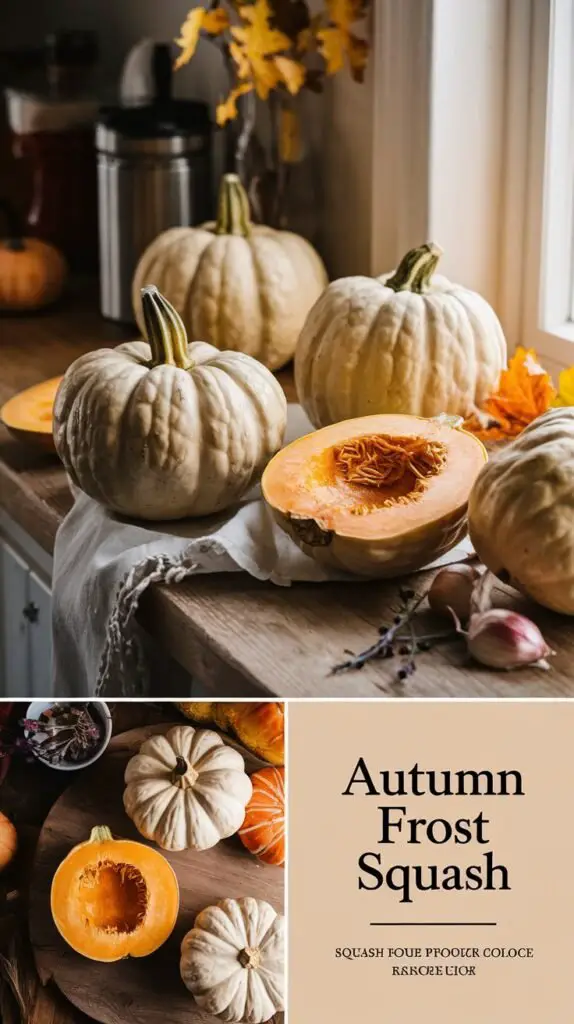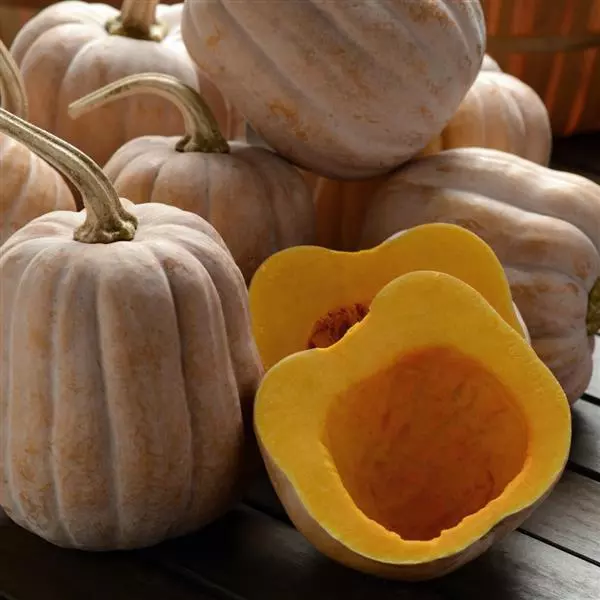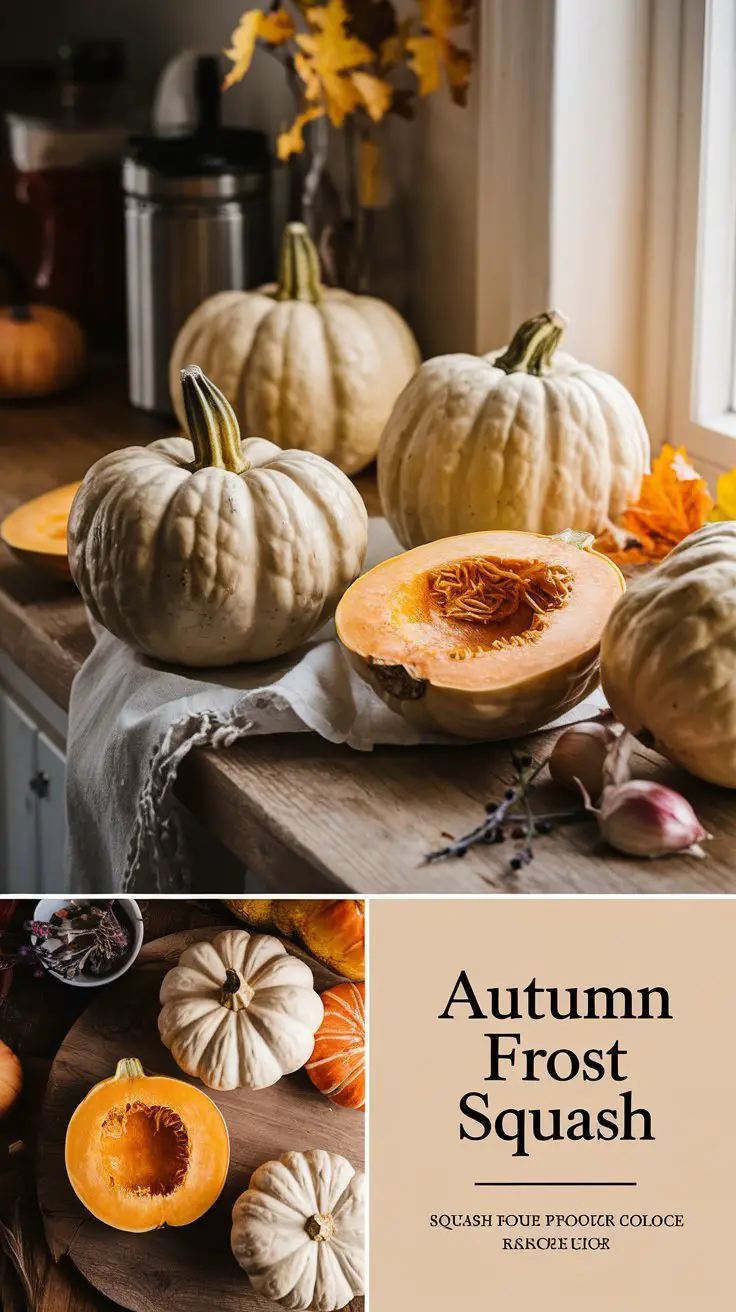Discover the delicious Autumn Frost squash in 2024. Learn expert tips on growing, harvesting and cooking this versatile winter squash variety for your garden and kitchen.
Autumn Frost squash is a delightful hybrid winter squash variety that combines the best qualities of butternut squash and acorn squash. Known for its sweet, nutty flavor and smooth texture, this frost-tolerant vegetable is becoming increasingly popular among home gardeners and chefs alike. With its unique appearance and excellent storage qualities, Autumn Frost squash is a must-try for any squash enthusiast in 2024.
Hello, I’m Ashley Scott, a horticulturist and culinary expert with over 15 years of experience in vegetable cultivation and farm-to-table cuisine. Today, I’m excited to share my knowledge about Autumn Frost squash, a relatively new variety that’s making waves in the world of winter squash varieties.
Understanding Autumn Frost Squash

Autumn Frost squash is a hybrid variety developed by Johnny’s Selected Seeds. It’s part of the Cucurbita moschata species, which includes butternut squash. Key characteristics include:
- Medium-sized fruits weighing 2-3 pounds
- Powdery blue-gray exterior with ribbed sections
- Bright orange, sweet flesh with a smooth texture
- Excellent storage life of up to 4 months
As one of the most frost-tolerant vegetables, Autumn Frost squash can withstand light frosts, making it an ideal choice for cooler climates and late-season harvests.
Why Choose Autumn Frost Squash in 2024?

- Flavor Profile: Its sweet, nutty taste makes it perfect for both savory and sweet dishes, appealing to the growing trend of versatile ingredients in home cooking.
- Nutritional Value: Rich in vitamins A and C, fiber, and antioxidants, Autumn Frost squash aligns with the increasing focus on nutrient-dense foods.
- Extended Harvest: As a long-storing winter vegetable, it provides fresh produce well into the winter months, supporting sustainable eating habits.
- Compact Growth: Ideal for small-space gardening, which is becoming more popular in urban and suburban areas.
Growing Autumn Frost Squash
Climate and Planting Time
Autumn Frost squash thrives in USDA hardiness zones 3-9. Plant seeds or transplants after the last frost date in your area, typically in late spring to early summer.
Soil and Sunlight Requirements
- Soil: Well-draining, fertile soil with a pH between 6.0 to 6.8
- Sunlight: Full sun, at least 6 hours of direct sunlight daily
Planting Tips
- Space plants 3-4 feet apart in rows 6 feet apart
- Plant seeds 1 inch deep, or transplant seedlings at the same depth they were growing
- Add compost or well-rotted manure to the soil before planting
- Water deeply and regularly, especially during fruit set
For container growing, choose a large pot at least 24 inches in diameter and 12 inches deep.
Innovative Care Techniques for 2024
Companion Planting
Pair Autumn Frost squash with beneficial companion plants like marigolds to deter pests, or plant with corn and beans in a traditional “Three Sisters” garden.
Vertical Growing
Save space by training vines to grow up trellises or supports, a technique gaining popularity in urban gardening.
Mulching
Use organic mulch to retain moisture, suppress weeds, and regulate soil temperature. Biodegradable options like straw or leaves are increasingly favored for sustainable gardening practices.
Eco-Friendly Pest Control
Implement integrated pest management techniques, such as introducing beneficial insects or using neem oil to control common squash pests like squash bugs and cucumber beetles.
Harvesting and Storage
Harvest Autumn Frost squash when the skin turns a powdery blue-gray color and is hard enough to resist puncture by a fingernail. To store:
- Cure in a warm, dry place for 7-10 days
- Store in a cool (50-55°F), dry location
- Check regularly for any signs of decay
Properly stored Autumn Frost squash can last up to 4 months, making it an excellent choice for winter food preservation.
Culinary Uses
Autumn Frost squash’s versatility shines in the kitchen:
- Roast with olive oil and herbs for a simple side dish
- Puree for soups, sauces, or pie fillings
- Cube and add to stews, risottos, or grain bowls
- Stuff halves with grains and proteins for a hearty meal
Its sweet flavor pairs well with sage, cinnamon, maple syrup, and sharp cheeses.
Health Benefits
Autumn Frost squash is not only delicious but also nutritious:
- High in beta-carotene, which the body converts to vitamin A
- Good source of vitamin C, supporting immune health
- Rich in fiber, promoting digestive health
- Contains antioxidants that may help reduce inflammation
As consumers increasingly seek nutrient-dense foods, Autumn Frost squash is well-positioned to become a staple in health-conscious diets.
Autumn Frost squash offers a delightful combination of flavor, versatility, and nutrition. Whether you’re a home gardener looking to try a new variety or a chef seeking to expand your winter squash repertoire, Autumn Frost is an excellent choice. By following these growing tips and exploring its culinary potential, you can enjoy this wonderful squash throughout the autumn and winter months of 2024 and beyond.
For more gardening tips and plant care guides, visit usagardenhub.com




